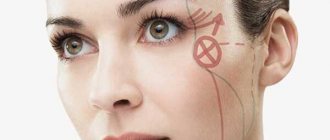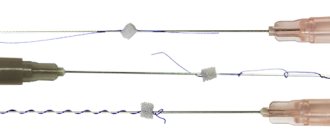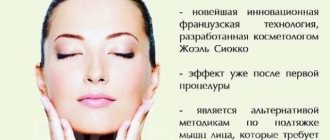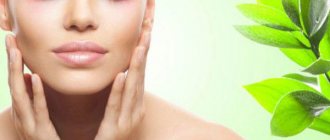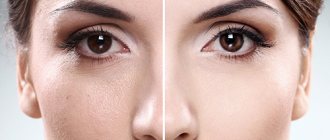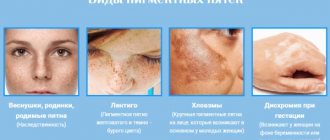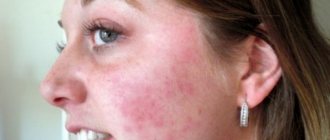Thread lifting quickly solves various aesthetic problems; Suitable for both women and men. Subcutaneous implantation of threads for a facelift is the optimal choice for patients under 50 years of age, when the first signs of age-related changes become noticeable: bags under the eyes, wrinkles on the forehead and near the eyes, sagging skin in the cheek area, pronounced nasolabial folds and in the mouth area, blurred facial contours . Thread face lifting is a smart choice if you don’t need a radical correction, are afraid of pain, and don’t have time for a long recovery. Compared to plastic surgery, the thread lifting procedure, that is, reinforcing the skin with threads, is low-traumatic and safe (the term “reinforcement” is borrowed from construction theory and means strengthening from the inside with a frame of fibers that are inserted under the skin along certain mesh lines).
A visible and natural result is ensured by the mechanical fixation of skin tissues with special, thinnest threads, and the long-term effect is ensured by their appearance and composition.
The risk of complications after a facelift with threads is low, the manipulation itself takes no more than an hour. The first days are characterized by swelling; complete tissue restoration takes about a month and a half; no scars remain. The result with a cumulative effect over several months lasts up to 5 years
What is used for the lifting procedure
Special guide needles and sterile biocompatible threads are used to gently tighten the skin of the face and other areas, meaning that when inserted they do not cause rejection, allergic or immune reactions. Threads differ in type, composition, texture, method of placement and fixation in tissues. When choosing a base material for lifting, it is best to trust a doctor who will take into account your wishes and body characteristics.
Next, we will help you navigate the variety and effectiveness of threads that are used for anti-aging procedures.
Face lift threads. Features of their use
Non-absorbable threads for lifting - suitable for correcting pronounced sagging skin and eliminating age-related defects. Previously, for reinforcement purposes, wires made of inert precious metals that were not rejected by the body were widely used: gold and platinum of the highest standard. The once popular gold thread reinforcement technology has given way to newer developments. Now cosmetologists prefer innovative polymer bases in face lift threads. The key substance in their composition is polypropylene, a material with pronounced strength and wear resistance; Teflon is less commonly used. Such non-degradable polypropylene or Teflon threads guarantee visible tightening for up to 5 years: lying deep enough, they effectively tighten and hold the surface and middle layers of tissue.
Most often, non-absorbable foundations are recommended for patients with obvious age-related changes who have not exceeded the age of 50. It should be taken into account that the introduction of such threads imposes restrictions on the use of a number of hardware cosmetology techniques in the future.
Get an online consultation
right now.
Get
Aptos threads are common . At the moment, the Aptos thread is recognized as the most effective in the world of cosmetology. Thanks to the thickness and shape of the threads, the Aptos facelift is able to reliably lift and fix the subcutaneous layers and combat ptosis (sagging of soft tissues due to weakened muscle function). The Aptos line has a wide selection of fibers in composition and texture (kogi - notched, and spiral cut) depending on the area that needs to be corrected.
Aptos threads for face lifting are non-absorbable - these are polypropylene aptos threads, and absorbable - biodegradable aptos threads made of caprolactone, which promotes enhanced collagen production.
, Teflon Gore-Tex threads are similar to aptos (they also belong to the category of non-biodegradable threads), but they are not so widespread.
Self-absorbable lifting threads, subject to biodegradation, form a framework, stimulating the skin's natural support through the production of collagen or hyaluronic acid. They are not suitable for severe ptosis and are more suitable for middle-aged patients. The effect lasts up to 2-3 years. Self-absorbable threads are currently divided into categories based on their qualitative composition - caprolon/caprolactone, polydioxanone, polylactic acid.
Polydiaxonone ( mesothreads) for face lifting are largely recommended for the prevention of age-related changes and to combat the initial manifestations of aging; face lifting with mesothreads is recommended for patients under 35-40 years of age. The technology came from South Korea. The thinnest of all those used, mesothreads for the face are installed shallowly, at the level of the hypodermis, that is, directly in the skin. The effectiveness of mesothreads is primarily related to the effect on tissue structure: they additionally enrich the layers of facial skin with lactic acid, which can significantly increase collagen synthesis. The mesothread lifting procedure stimulates biological reactions in the skin, under the influence of which revitalization or tissue rejuvenation occurs.
Separately, sometimes as an alternative to traditional thread lifting, reinforcement with liquid safe threads (or biothreads) is considered. The mechanism of action is the same self-resorption of the base with the subsequent formation of a collagen framework of the face. Liquid threads for the face have a safe and natural composition close to the body tissues, “locked” in a gel-like structure.
This operation is distinguished by its technology: a composition of hyaluronic acid and zinc oxide is injected under the skin with a syringe with a very thin needle, which gradually hardens and forms a stable subcutaneous mesh frame, smoothing out wrinkles. Liquid threads are gradually eliminated from the body. Of course, they give the mildest effect in comparison with other methods, but they cannot correct pronounced problems caused by age. The result after injection under the skin lasts up to 3 years - innovative liquid threads for the face, even when removed, continue to “work”.
Polylactic threads are made of polylactic acid - this is a special fiber that promotes tissue regeneration and slows down aging by activating cellular renewal. Lactic acid is a natural substance, an unchanged and important participant in many biochemical processes in the body, which is produced almost every second as a result of the breakdown of sugars. Many experts recommend polylactic threads for the first tightening procedure and for slowing down skin aging after 30 years. It is also important that after the installation of the threads and the end of the rehabilitation period, it is possible to carry out any cosmetic and aesthetic procedures without restrictions.
In the category of polylactic acid-based products injected under the skin, we can highlight the increasingly popular Resorblift threads. The French developed the methodology for working with them; Then America, European and Asian countries, and Russia joined the use of these polylactic fibers - in our country these threads have been used for more than 6 years. After injection under the skin, the acid begins to gradually dissolve, stimulating the active production of natural collagen, the fibers of which gradually replace the threads and form a new frame. Such assistance in rejuvenation through the natural processes of regeneration of the body is as natural and reliable as possible.
Combined lifting threads are a hybrid of absorbable and non-absorbable. These cosmetic lifting fibers are based on polypropylene and polylactic acid. As a rule, these are conical threads that appeared 5 years ago and are already quite well known in the cosmetology services market.
At what age should threads be used?
This is perhaps the most frequently asked question.
From the point of view of the law - from 18 years of age. And from an aesthetics point of view, the first indications for thread lifting most often appear around the age of 30: wrinkles deepen, the oval of the face “floats”, and the skin loses firmness and elasticity. However, these processes are strictly individual for each person, and the time for correction can come either at 25 or 40 years.
The concept that thread lifting is indicated only when the face loses its youthful oval and the hated jowls begin to bother everyone, the nasolabial and labio-mental folds are deeply formed, and the face becomes “square” is long outdated.
You need to understand that thread lifting is not plastic surgery, we do not cut off the skin, but only move the tissue, due to which the skin contracts and activates histological lifting.
It takes time to start all these processes.
In this regard, the result should be assessed no earlier than six months later, or better yet, a year later.
Therefore, if you are over 50 and finally decided that it’s time to get threads, and that after that you will look 30, then you are too late. We will not say that there will be no result, it will be, but not what you expect.
In threadlifting, as in many other procedures, there is such a thing as the quality of the source material. The better it is, the more pronounced the result.
Therefore, as soon as the first signs of gravitational ptosis appear or do not appear at all, but you are already over 25, it is time to think about placing threads. This is how you will prolong your youth for many years.
Threads for lifting by texture and profile
- Smooth (linear). They were the very first in this area and continue to be used. Well suited for moderate correction of problem areas. Experts are implementing this solution to correct the chin, cheekbones, and forehead. To fix the threads, cuts up to 5 mm are made.
- With notches (kogi threads) . They contain hooks (notches similar to jagged hooks), which help secure the threads in the surrounding tissues. They can be used to correct various anatomical areas - chin, jowls, nasolabial wrinkles, and the notches are different for each area of the face. In order to tighten the oval of the face, you need fewer of them. Also, lifting with kogi threads lasts longer than when done with smooth ones. They are introduced into the subcutaneous layers to a depth of 4-5 mm through micropunctures. Within six months to a year they dissolve, being replaced by collagen.
A typical example of a notched material is aptos thread. For example, the doctor will suggest such innovative fibers for face lifting as Dermafil Happy Lift (dermafil). The Italians produce their line of absorbable caprolactone kogi threads using patented technology (the characteristic notches applied have brand differences). Development for cosmetology and plastic surgery came to Russia after successful experience of use in Europe and Asia. The thread has gained greater strength and is securely attached to the fabrics. It takes a year to a year and a half for it to completely resolve. Being replaced during this period by a synthesized collagen framework, the material provides a tightening correction result.
- Spiral threads will provide a strong effect of lifting and modeling the oval of the face. These are more elastic and dense shortened threads, subject to returning to their previous state after tension. They are often combined with other varieties to obtain a better thread-lifting effect. Almost irreplaceable for patients with thin skin. Thus, the “classic” aptos threads are just spiral threads. The spring threads reliably hold the skin and take root well. One of the most elastic. For this reason, flexible spring threads are recommended for modeling the most mobile areas of the face: nasolabial folds and cheeks.
- Conical - a type of thread with cone-shaped knots evenly distributed along the length, which help them to be fixed in the tissues. This is a combined thread formed from dissolving cone elements and a non-absorbable base. About a year after implantation, the cones completely disintegrate, and the base fiber firmly holds the skin tissue.
The most famous product is Silhouette Soft conical threads. This is an American-made absorbable material (polylactic acid is a key element of the composition). It has a fixed length measuring 36 cm. The 8 cones are positioned to hide the nodules, remaining invisible under the skin, and at the same time secure the soft tissue in the desired position in the areas that are subject to lifting.
The doctor will advise which type of threads for a facelift or lifting should be chosen, based on the individual and age characteristics of the patient and his state of health.
Contact Dr. Begma’s clinic, and during a face-to-face consultation, they will choose the best way to solve your aesthetic problems.
Why is there no effect?
More than once in my practice I have heard that inserting threads has no effect. This has no effect, and simply in pursuit of making the procedure cheaper, some doctors use threads from the “just to deliver” category. And unfortunately, in most cases, it is you, our dear patients, who provoke them to this, wanting to do the procedure for “pennies”
Important!
The thread lifting procedure, especially with true lifting threads Dermafil Happy Lift, Aptos, etc., will not be cheap. Therefore, you need to understand for yourself - either I put threads or I don’t.
Let's summarize the results of incorrect use of threads, which will not have a lifting effect:
- Using reinforcing threads to achieve lifting
- Using an insufficient number of threads for lifting purposes. It is especially touching when they place one or two threads on each side. And in the best case, it’s good that these will be so-called kogi, but sometimes they are just monofilaments. In this case we are talking only about pseudo-lifting threads
- Incorrect installation of threads - either too deep or superficial. Incorrectly selected reference points when installing lifting threads.
- Incorrectly selected patients - patients with stage III or IV gravitational ptosis are unlikely to be satisfied with the procedure.
Rehabilitation period.
Rehabilitation depends on the type, quantity and technique of inserting the selected threads, as well as the goals we are pursuing.
It may not exist at all, just a couple of small bruises that do not affect the quality of life, or it can last from 2 weeks to several months. During this time, it is only necessary to protect the treated area from sudden and intense movements, in particular, to refrain from active facial expressions, and chew slowly and carefully while eating. Avoid visiting baths, saunas, gyms, and solariums. Also, for a period of up to 2 months, it is advisable to exclude all manual procedures in the area where the threads are installed.
Important!
Do not self-medicate!
During this period, you should follow all the recommendations given to you INDIVIDUALLY and introduce certain restrictions into your usual lifestyle, about which you will be very carefully informed before the thread lifting procedure.
Indications for use
Non-absorbable Spring Thread is recommended for ages 35 to 75 years. Main indications for use:
- sagging chin, “double chin”
- loose skin of the face, neck, décolleté
- facial asymmetry
- "swollen" cheeks
- wrinkles on the face and neck
Note that with the help of these threads you can tighten not only your face and neck. Spring Trad showed excellent lifting results in the following areas:
- breast
- forearms
- stomach
- buttocks
- hips
Mesothreads: price for 2022
For mesothreads for face lifting, the price will depend on the type of thread, as well as their quantity. As we said above, the cheapest cost is the smooth linear type of PDO thread (about 110 rubles for 1 thread). But in the clinic, the price for installing 1 such thread will already be about 900 rubles, but if the patient plans to install a large number of threads, then, based on their quantity, the price of mesothreads can be reduced to approximately 600 rubles for 1 thread.
Threads made from a copolymer of L-lactide with caprolactone will always be a priori more expensive than threads made from PDO, so the cost of 1 thread of the “Aptos Nano Vitis-4” type will be about 1,500 rubles. When installing Screw and Double Screw threads from PDO, you should focus on the same 1,500 rubles for 1 thread. As for GOG type threads, the highest quality ones will have a higher cost and, accordingly, their price usually starts from 2300 rubles for 1 thread. Below you can read reviews of thread lifting with mesothreads.
Types of mesothreads
There are three main types of material, which differ in the degree of tissue tightening. The doctor determines which type should be used based on the level of tissue sagging, the elasticity of the tissue in the area where the lift is performed, as well as the individual characteristics of the patient’s skin.
Linear mesothreads . This is the main type, which is intended not so much for tightening the skin in problem areas, but to improve the elasticity of the skin. That is, the procedure for introducing linear threads into the skin can be called rather preventive, stimulating the production of tissues’ own collagen. The introduction of threads is carried out for the following indications:
- improving skin elasticity;
- smoothing out minor wrinkles in the area around the lips;
- changing the shape of the lips;
- reinforcement of the anterior neck area.
Spiral mesothread springs . They replenish volume on the cheekbones and cheeks, and also lift sagging skin. Used for:
- raising the eyebrow line;
- double chin lift;
- facelift;
- correction of linear wrinkles;
- tightening of nasolabial folds.
Double strand braids. This is a pair of monofilaments that are intertwined with each other. Their feature is increased strength. They have a pronounced stimulating effect. With minimal consumption of the actual threads, they have a very high supporting effect. Used in particularly difficult areas.
The main factors excluding thread lifting:
The first and main contraindication is the patient’s overestimated attitude towards the procedure, the second is the lack of psychological attitude to competently survive the rehabilitation period
Well, and of course such general contraindications as:
- pregnancy and lactation;
- the presence of previously installed implants or non-absorbable materials (threads, gels) in the correction area;
- tendency to form keloid and hypertrophic scars;
- feverish state, increased body temperature;
- inflammatory processes on the skin and under it in the correction area, including herpetic rashes;
- chronic diseases in the acute stage;
- cancer and autoimmune diseases;
- diabetes;
- taking anticoagulants or bleeding disorders;
- epilepsy;
- psychical deviations;
- age up to 18 years.
Complications -
Usually, after thread reinforcement, there are no hematomas and no significant tissue swelling. This is due to the fact that work in the depths of the tissue is carried out with a blunt-pointed cannula, which pushes the vessels and nerves apart, rather than cutting them like a sharp-pointed needle. In addition, the installation of reinforcing threads is carried out subdermally, and at this depth there are simply no large vessels that can be injured. Therefore, immediately after the procedure, as a rule, you will not see any hematomas or swelling, but there will be slight redness of the skin.
However, if the doctor inserts the threads too deeply, then injury to the vessels is still possible even with a cannula, and in this case the bleeding may be severe enough that it may require stopping the procedure. But in small hematomas along the threads there is a big plus. The fact is that sclerosis of such hematomas leads to an increase in skin density and, thus, the effect will be better (no matter how strange it may seem).
If there are technical errors (deep insertion of threads), the integrity of various formations, for example, the excretory duct or the capsule of the parotid salivary gland, may be damaged. Most often, inexperienced cosmetologists injure the duct, which leads to the formation of salivary fistulas and many problems that require elimination. If the doctor inserted the threads too superficially, there may be persistent retraction of the skin along the thread (thread contouring). If the threads are inserted too deeply, there may be, on the contrary, protrusion of the tissue.
Incorrect cutting of the ends of the threads at the point of skin puncture can lead to skin injury and the development of inflammation. The inflammation may appear as a small inflamed bump (papule without pus). There may also be severe infectious complications, such as abscess and cellulitis, which can occur due to violations of sterility during the procedure, damage to the salivary gland duct, improper cutting of the ends of the threads, and lack of proper wound care on the part of the patient. Another complication is exacerbation of herpes.
The difference between thread lifting and RF lifting
The main difference between these methods is the technique and spectrum of action:
- Thread lifting involves the subcutaneous introduction of special threads that prevent tissue sagging for several years. Their installation is completed in one session.
- RF lifting is carried out using a special device that emits high-frequency electromagnetic pulses. During the procedure, the problem area is heated to a certain temperature, resulting in the compaction of collagen and elastin fibers. To achieve visible results, you must complete the full course, consisting of 6 sessions. RF lifting is also used to correct local fat deposits.
Lifting procedures are aimed at preventing and eliminating visible signs of skin aging. With their help, it is possible to remove wrinkles, correct the oval of the face, and prevent gravitational ptosis.
The procedure is selected individually for each patient, based on his skin condition, age and desired result.

